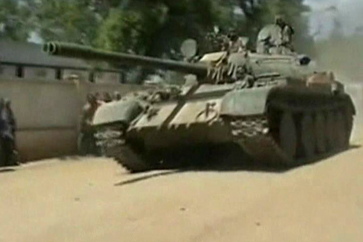
What is a failed state? It is a state that can no longer control its own security and does not have control over its territory, borders, economy, and people. The expression “failed state” hasn’t been used since 2014 because it has the nuance that a state cannot be saved. The correct expression is “Fragile State”.
There are different ways of looking at this, but the Fragile States Index published by the Fund for Peace, an American non-profit organization, recognizes 12 states that are at a very high risk of failing and a further 18 that are at high risk of failing. They look at a country’s performance in over 100 categories and total the score, giving a score out of 120. A country with a score over 100 has a very high risk of failing and a country with a score over 90 is at risk of failing. The failed states (in order of highest score) are Somalia, Yemen, South Sudan, DR Congo, Syria, Afghanistan, Sudan, Central African Republic, Chad, Haiti, Ethiopia, and Myanmar. Somalia is easily highest on the list. The United States Government has a 4 level travel warning, with 1 being safe and 4 being “do not travel”. 10 of these failed states are level 4 and two of them are level 3.
We need to look at what a state is before we can look at why some states fail. The definition of a state is “a political entity that regulates society and the population within its territory with the legitimate use of force”. The people that run a state have certain obligations to the people that live there. They have to enforce laws, provide basic services, keep infrastructure such as schools and hospitals running, protect the people, attempt to make the economy grow, ensure a justice system, and basically keep the people safe. The state that comes lowest on the Fragile States Index is Norway, with a score of 14.5 out of 120. In all categories, it is the perfect example of a state that is working. It is not perfect and it does have problems, but it is a working state. Interestingly, the United States has a score of 45.3, which is “stable”, but closer to the “less stable” category which comes at 50.
The Fund for Peace looks at 12 categories that are divided into 4 indicators. The first indicator is cohesion, which is how well the state is held together. The categories here are how well the security apparatus is working, whether or not it is protecting the people effectively and if they can trust it. If the leaders of the state are factionalized along ethnic, class, clan, racial, or religious lines. And if there are grievances between different groups in the state. The second indicator is economic. The categories here are how the economy is declining and the amount of poverty. It looks at if the development in the state is too uneven. And it looks at how many people are fleeing the state and the brain drain. The third indicator is political. The categories here are the legitimacy of the state and the people’s confidence in it. It looks at the level of public services, such as hospitals and schools. And it looks at whether human rights and the law are upheld. The last indicator is social and it looks at the demographic pressures, such as high population growth, or an aging population. It also looks at the number of refugees. There is also an indicator that looks at the intervention of external forces.
There are many reasons why a state might fail, and the government become unable to govern, but the biggest and most common reason is civil war. Out of the countries that are in the top 12 of the Fragile States Index because they have a score of over 100, 11 of them have an ongoing civil war. Chad is the only country that doesn’t have a war, but their civil war has only been over for a few years and the government is trying to suppress the people and the opposition with violence. They also have a large number of refugees coming in from neighboring Sudan, which is causing them problems.
How do you fix a failed state? Not easily and military intervention isn’t the answer. As the US has learned, you cannot force peace. To fix a failed state, you need three things. First, you need the people to take power directly. Second, you need support from the people that are already in power or trying to take power. Third, you need to refocus everything on the people and make a state centered on the benefit of the people. In other words, you need everyone to come to their senses and try to make things better for the people. That is so easy to say, but very difficult to do. The forces trying to take power use fear, violence, and many other methods to keep the people from doing anything. And this is what I learned today.
Image Fair use, https://en.wikipedia.org/w/index.php?curid=8641079
Sources
https://www.thoughtco.com/what-is-a-failed-state-definition-and-examples-5072546
https://en.wikipedia.org/wiki/Failed_state
https://en.wikipedia.org/wiki/Fragile_States_Index
https://en.wikipedia.org/wiki/State_(polity)
https://worldpopulationreview.com/country-rankings/failed-states
https://www.politico.eu/article/opinion-russia-benefits-disintegration
https://travel.state.gov/content/travel/en/traveladvisories/traveladvisories.html
https://www.merriam-webster.com/dictionary/nation
https://www.thoughtco.com/country-state-and-nation-1433559
https://en.wikipedia.org/wiki/List_of_non-international_armed_conflicts
https://reliefweb.int/report/chad/fallout-chad-fighting-darfur

Pingback: What is a blood diamond?